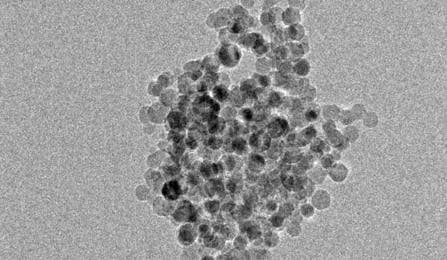Hydrogen is an extremely appealing energy source, despite the immense hurdles than come with storing it. Still fuel cells based on hydrogen are extremely useful, and a team of researchers at University at Buffalo may have found the fastest and most effective way of obtaining this element. Basically, it’s as easy as adding water.

The scientists produced spherical silicon particles about 10 nanometers in diameter. After these were immersed in water a chemical reaction commenced which formed silicic acid (a non-toxic product) and pure hydrogen. The whole reaction took place in under a minute – that’s 150 times faster than similar reactions using silicon particles 100 nanometers wide, and 1,000 times faster than bulk silicon.
To test the resulting hydrogen for purity, the researchers used the chemical product of their reaction to supply a fuel cell that powered a small fan.
“When it comes to splitting water to produce hydrogen, nanosized silicon may be better than more obvious choices that people have studied for a while, such as aluminum,” said researcher Mark T. Swihart, UB professor of chemical and biological engineering and director of the university’s Strategic Strength in Integrated Nanostructured Systems.
This gaping differences in reaction times with water between various silicon particle sizes is due to geometry. The smaller the particle is the most likely it is to have an almost spherical geometry which allows for a more uniform surface for water to react with; if the particle is larger , however, then it forms nonspherical structures whose surfaces react with water less readily and less uniformly.
“With further development, this technology could form the basis of a ‘just add water’ approach to generating hydrogen on demand,” said researcher Paras Prasad, executive director of UB’s Institute for Lasers, Photonics and Biophotonics (ILPB) and a SUNY Distinguished Professor in UB’s Departments of Chemistry, Physics, Electrical Engineering and Medicine. “The most practical application would be for portable energy sources.”
Although hydrogen was produced simply by adding water, which is something incredible by itself, the problem is that this isn’t quite the best process of obtaining the element at massive scales. In the long run, you don’t need to produce hydrogen that fast, since supply isn’t that great, and producing silicon particles of such a minute size is extremely expensive. So, indeed this technique is a lot more useful for portable applications.
“Perhaps instead of taking a gasoline or diesel generator and fuel tanks or large battery packs with me to the campsite (civilian or military) where water is available, I take a hydrogen fuel cell (much smaller and lighter than the generator) and some plastic cartridges of silicon nanopowder mixed with an activator,” Swihart said, envisioning future applications. “Then I can power my satellite radio and telephone, GPS, laptop, lighting, etc. If I time things right, I might even be able to use excess heat generated from the reaction to warm up some water and make tea.”
source: Buffalo






